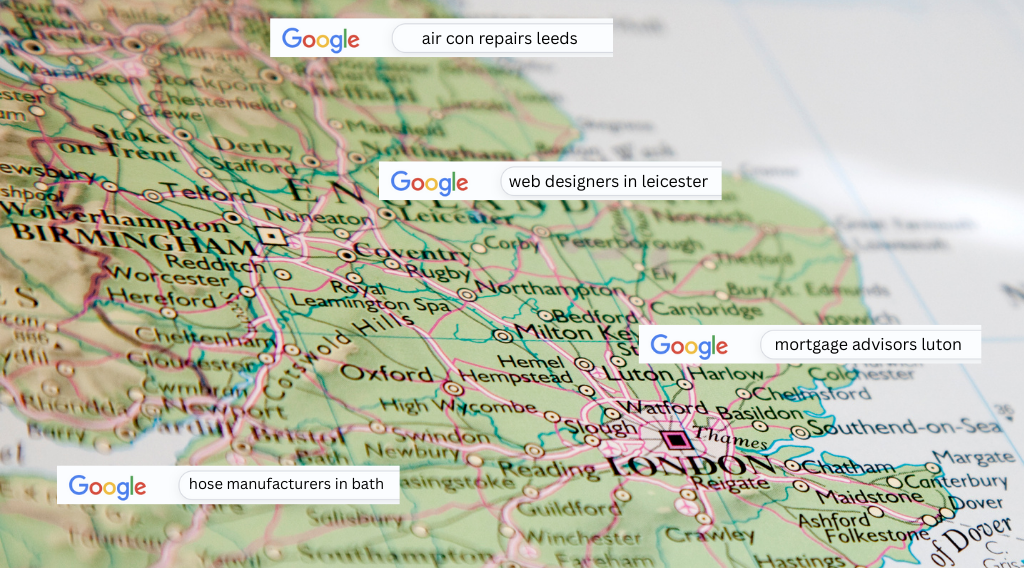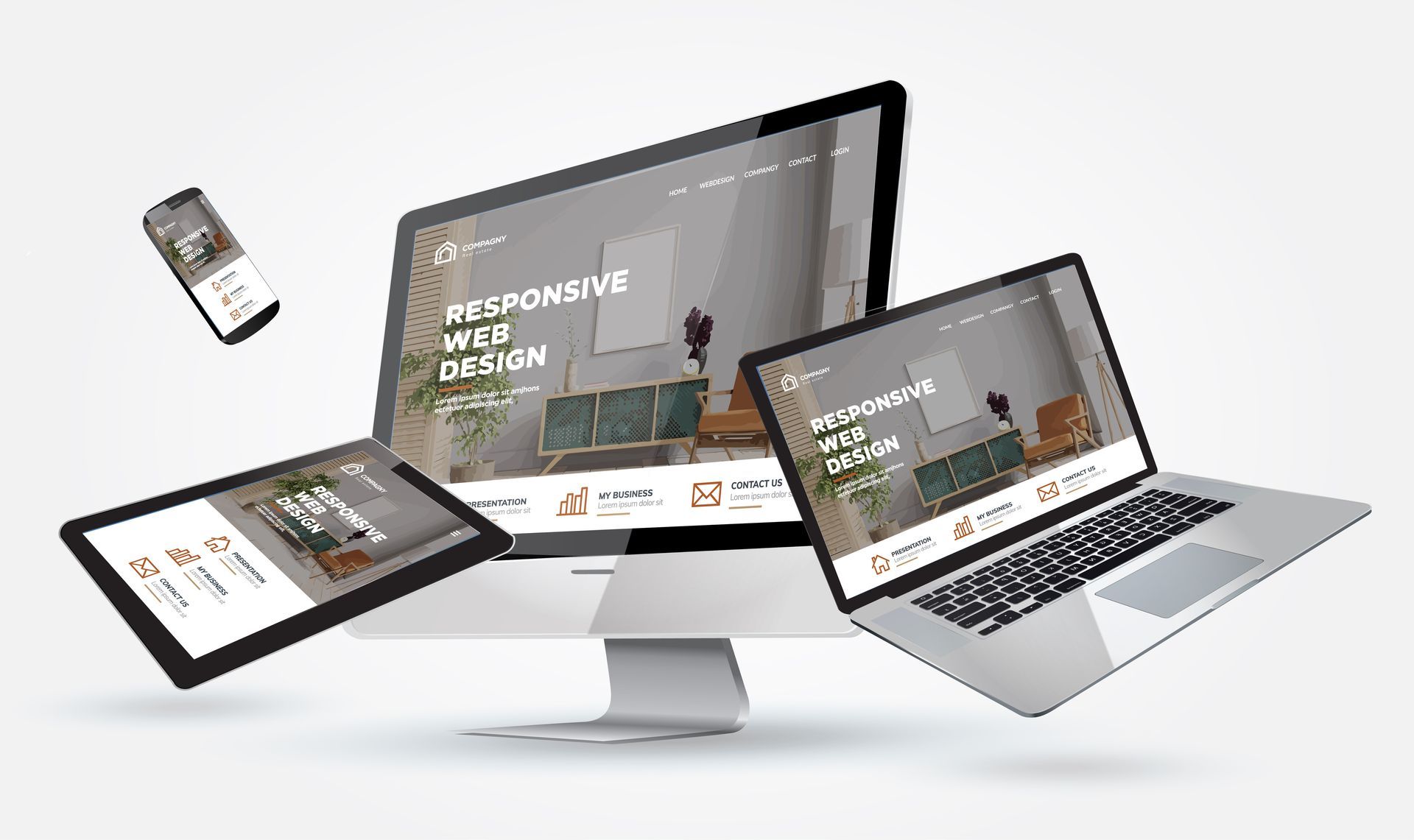Boost Your Business: 10 Proven Strategies to Skyrocket Website Conversion Rates
Boost Your Business: 10 Proven Strategies to Skyrocket Website Conversion Rates
In today's digitally-driven marketplace, having a stunning website isn't enough to guarantee sales. If you're struggling to turn casual visitors into loyal customers, you're not alone. Many businesses grapple with low conversion rates, leaving them frustrated and eager for solutions. But what if you could change that narrative? Imagine transforming your website into a powerful sales machine that consistently converts visitors into paying customers.
In this article, we'll explore ten proven strategies designed to skyrocket your website conversion rates. From refining your user experience to mastering persuasive copy, these actionable tips are straightforward yet impactful. Whether you run a small boutique or a large enterprise, these strategies will provide the insights and tools you need to boost your business. Get ready to unlock your website's full potential and watch your revenue soar!
Understanding Website Conversion Rates
Website conversion rates represent the percentage of visitors who take a desired action on your website, such as making a purchase, signing up for a newsletter, or filling out a contact form. This metric is crucial because it directly correlates with your business's revenue. High conversion rates indicate that your website is effectively engaging with visitors and guiding them towards completing valuable actions. On the other hand, low conversion rates suggest that there are barriers preventing users from converting.
Understanding your website’s conversion rate is the first step towards improvement. By analysing the current performance, you can identify areas of weakness and opportunities for growth. This requires a deep dive into user behaviour, assessing how visitors interact with your site, and pinpointing where they drop off. Tools like Google Analytics can provide valuable insights into these patterns, helping you formulate a clear picture of your site's conversion landscape.
It's also important to benchmark your conversion rates against industry standards. Different industries have varying average conversion rates, so what might be considered low in one sector could be high in another. Knowing where you stand in comparison to your competitors can give you a realistic perspective on your performance and help set achievable goals for improvement.

The Importance of Conversion Rate Optimisation (CRO)
Conversion Rate Optimisation (CRO) is a systematic process of increasing the percentage of website visitors who complete a desired action. This is achieved by understanding how users navigate your site, what actions they take, and what's stopping them from completing your goals. CRO is not about getting more visitors to your site; it’s about making the most out of your existing traffic.
Investing in CRO is essential because it maximises the value of your current audience. Acquiring new visitors can be costly and time-consuming, so improving conversion rates is often a more efficient way to boost revenue. Moreover, optimised conversion rates mean that every marketing effort you undertake, from paid ads to organic search, will yield better results, amplifying your return on investment.
Additionally, a focus on CRO ensures that your website remains user-centric. By continuously testing and refining your site based on user feedback and behaviour, you create a more intuitive and enjoyable user experience. This not only improves conversion rates but also enhances customer satisfaction and loyalty, leading to repeat business and positive word-of-mouth.
Analysing Your Current Conversion Rates
To effectively improve your conversion rates, you must first understand where you currently stand. Begin by gathering data on your website’s performance. Key metrics to focus on include the overall conversion rate, bounce rate, average session duration, and the number of pages per session. These metrics will provide a snapshot of how users are interacting with your site and where they might be encountering obstacles.
Using analytics tools, segment your data to gain deeper insights. Look at conversion rates across different traffic sources, devices, and user demographics. This will help you identify specific areas where conversions are lagging. For instance, you might find that mobile users have a significantly lower conversion rate compared to desktop users, indicating a potential issue with your mobile site’s usability.
Once you have a clear understanding of your current performance, it’s time to investigate the reasons behind the numbers. Conduct user surveys to gather direct feedback on their experience. Use heatmaps and session recordings to observe how users navigate your site and where they encounter difficulties. By combining quantitative data with qualitative insights, you can uncover the root causes of low conversion rates and develop targeted strategies to address them.
Crafting Compelling Calls-to-Action (CTAs)
A Call-to-Action (CTA) is a prompt that encourages visitors to take a specific action, such as "Buy Now," "Sign Up," or "Learn More." Effective CTAs are clear, concise, and persuasive, guiding users towards the next step in their journey. The design and placement of your CTAs can significantly impact your conversion rates, making this an area worth focusing on.
Start by ensuring that your CTAs are prominently displayed and easily noticeable. Use contrasting colors to make them stand out from the rest of the content. The language you use is equally important; it should be action-oriented and create a sense of urgency. Phrases like "Get Started Today" or "Limited Time Offer" can motivate users to act quickly.
Testing different variations of your CTAs can also provide valuable insights. Experiment with different colors, sizes, and wording to see what resonates most with your audience. A/B testing allows you to make data-driven decisions by comparing the performance of different CTA versions. This iterative approach ensures that your CTAs are continually optimised for maximum impact.
Enhancing User Experience (UX) for Higher Conversions
User Experience (UX) is a critical factor in determining whether visitors will convert. A website that is difficult to navigate, slow to load, or cluttered with irrelevant content can frustrate users and drive them away. Enhancing UX involves creating a seamless, intuitive, and enjoyable experience for your visitors, ultimately leading to higher conversion rates.
Start by simplifying your website's design. A clean and organised layout helps users find what they're looking for quickly and easily. Minimise distractions by removing unnecessary elements and focusing on the key actions you want users to take. Ensure that your navigation is intuitive, with clear labels and a logical structure that guides users through their journey.
Speed is another crucial aspect of UX. Studies have shown that even a one-second delay in page load time can significantly impact conversion rates. Optimise your site’s performance by compressing images, leveraging browser caching, and using content delivery networks (CDNs) to ensure fast load times. Regularly testing your site’s speed and making necessary adjustments can keep your performance on track.
Finally, prioritise mobile optimisation. With an increasing number of users accessing websites via mobile devices, ensuring a responsive design is essential. A mobile-friendly site not only improves UX but also positively impacts your search engine rankings, leading to higher visibility and more traffic.

Leveraging A/B Testing for Effective Changes
A/B testing, also known as split testing, is a method of comparing two versions of a webpage to determine which one performs better. By showing different versions to different segments of your audience, you can gather data on user preferences and behaviours, making it easier to implement effective changes. This process is invaluable for optimising various elements of your site, from CTAs to landing pages.
Begin by identifying the elements you want to test. Common areas include headlines, images, CTAs, and form fields. Create variations of these elements and set up your A/B test using tools like Google Optimise or Optimisely. Ensure that you have a clear hypothesis for each test, such as "Changing the CTA colour will increase click-through rates."
As the test runs, monitor the results closely. Look for statistically significant differences in performance between the two versions. Once you have enough data, analyse the results to determine the winning variation. Implement the changes and continue testing other elements to further refine your site. A/B testing is an ongoing process that allows you to continuously improve your site based on real user feedback.
Utilising Social Proof to Build Trust
Social proof is a powerful psychological phenomenon where people look to others' behaviour to guide their own actions. In the context of a website, social proof can take various forms, such as customer reviews, testimonials, case studies, and trust badges. By showcasing positive feedback and endorsements, you can build trust with your visitors and increase conversion rates.
Start by collecting and displaying customer reviews prominently on your site. Highlight positive testimonials on your homepage, product pages, and checkout pages to reassure potential buyers. Use star ratings and review snippets to provide a quick visual indication of customer satisfaction. Authenticity is key, so ensure that your reviews are genuine and unfiltered.
Case studies and success stories are another effective form of social proof. Share detailed accounts of how your product or service has helped other customers achieve their goals. Include specific metrics and data to back up your claims. This not only builds credibility but also demonstrates the real-world value of your offerings.
Trust badges, such as security seals and certification logos, can also enhance credibility. Display these badges on key pages, especially those involving transactions, to reassure users that their data is secure. By leveraging various forms of social proof, you can create a sense of trust and reliability, encouraging visitors to take the desired action.
Optimising Landing Pages for Maximum Impact
Landing pages are standalone web pages created specifically for marketing or advertising campaigns. Their primary goal is to convert visitors by guiding them towards a specific action, such as signing up for a webinar or downloading an eBook. An optimised landing page is crucial for maximising the effectiveness of your campaigns and boosting conversion rates.
Begin by ensuring that your landing page is focused and uncluttered. Remove any distractions that could divert attention away from the main goal. Use a compelling headline that clearly communicates the value proposition and captures the visitor's interest. Follow this with concise and persuasive copy that highlights the benefits of the offer.
Visual elements play a significant role in landing page optimisation. Use high-quality images and videos that support your message and engage visitors. Include eye-catching CTAs that stand out and guide users towards the next step. The design should be visually appealing, consistent with your brand, and responsive across all devices.
A/B testing can also be applied to landing pages to identify the most effective elements. Test different headlines, images, CTAs, and form fields to see what drives the highest conversions. Continuously analyse the results and make data-driven adjustments to improve performance. An optimised landing page can significantly enhance the success of your marketing efforts and drive higher conversion rates.

The Role of Mobile Optimisation in Conversion Rates
In today's digital landscape, mobile optimisation is no longer optional; it's a necessity. With the increasing number of users accessing websites via mobile devices, ensuring a seamless mobile experience is crucial for maintaining high conversion rates. A mobile-optimised site not only improves UX but also positively impacts your search engine rankings, leading to higher visibility and more traffic.
Begin by adopting a responsive design that adjusts to different screen sizes and resolutions. This ensures that your site looks and functions well on all devices, from smartphones to tablets. Simplify navigation by using a mobile-friendly menu, large buttons, and clear CTAs that are easy to tap. Ensure that forms are short and easy to fill out on smaller screens.
Page speed is another critical factor in mobile optimisation. Mobile users expect fast load times, and any delay can lead to higher bounce rates. Optimise images, leverage browser caching, and use CDNs to ensure quick load times. Regularly test your site's performance on various mobile devices and make necessary adjustments to maintain optimal speed.
Finally, consider the unique behaviours and needs of mobile users. Mobile visitors may have different intents compared to desktop users, so tailor your content and CTAs accordingly. For example, emphasize local information, click-to-call buttons, and mobile-friendly payment options. By prioritising mobile optimisation, you can provide a better user experience and increase conversion rates.
Conclusion: Implementing Strategies for Lasting Results
Improving your website's conversion rates is an ongoing process that requires dedication, experimentation, and continuous refinement. By implementing the strategies discussed in this article, you can transform your website into a powerful tool for driving business growth. From understanding conversion rates to leveraging A/B testing and optimising for mobile, each strategy plays a crucial role in enhancing user experience and maximising conversions.
Begin by analysing your current performance and identifying areas for improvement. Craft compelling CTAs, enhance UX, and build trust through social proof. Optimise your landing pages and ensure that your site is mobile-friendly. Use A/B testing to make data-driven decisions and continuously refine your approach. By taking a holistic and user-centric approach to conversion rate optimisation, you can achieve lasting results and drive significant business growth.
Remember, there is no one-size-fits-all solution. Each business is unique, and what works for one may not work for another. Stay agile, keep experimenting, and be willing to adapt based on user feedback and data. With persistence and a commitment to excellence, you can unlock your website's full potential and watch your revenue soar.
Contact us for help designing a website that converts.
















